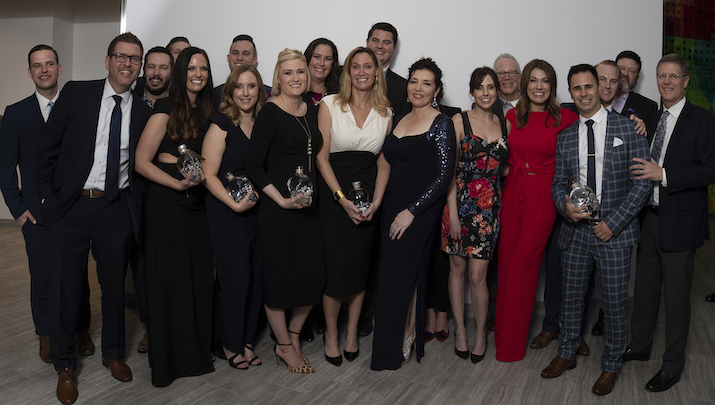

There’s No Such Thing as Work/Life Balance
- Todd Govig
- Govig & Associates
When my four kids were young, I would pull into the driveway of our family home after work each day, step out of my car, and hang my blazer on a large lemon tree in our front yard. Having shed my work self, I would take a deep breath and step into the house, determined to be 100 percent present for my family.
Of course, I wasn’t actually hanging my work clothes outside, but I did have a practice of going through those motions and—at least metaphorically—leaving my professional worries swaying in the breeze each night. As any Evergreen™CEO will tell you, when you’re building and growing a business, you can’t ever really leave that part of your life behind.
Despite that seemingly obvious reality, I spent quite a few years engaging in various strategies, including the lemon tree ritual, to create the mythical “balance” between my personal life and my commitment to my executive search firm, Govig & Associates. As a classic Type-A personality, I felt compelled to give 100 percent to all areas of my life, striving to be all things for all people. I spent a lot of time feeling guilty about how I was spending my time—both at work and at home. I was trying to do the right thing, but I was continually torn between the competing priorities in my life.
Here’s the thing I came to understand: There’s no such thing as work/life balance. We’ve all been steeped in that mythology of believing that if we’re doing it right, we’ll find some business-personal nirvana. The reality is that for most of us, the way the world operates today doesn’t allow for that. I used to pride myself in returning all calls within 24 hours; I sent innumerable hand-written notes. Today, the rate of email and other communication has outpaced my ability to respond. I could spend all day answering email, and if I answered my phone every time it rang, I wouldn’t be doing anything but talking on the phone. And that flow certainly doesn’t stop at 5 p.m. when we head home to family.
It’s time for a different strategy.
So, if balance is unattainable, what is the answer to leading a life that allows us to engage meaningfully with our family and friends, devote time and energy to personal passions, and commit to building and growing Evergreen businesses?
In my experience, seeking harmony is a more realistic goal. My life includes a lot of different “instruments”—people and roles and responsibilities that are tugging at me all the time. I’m a father. I’m a husband. I’m a brother. I’m a son. I’m a CEO. I serve on several boards. I’m involved in philanthropic activities. I love to get outside and hike, and I’m also a pilot. The list goes on and on. The concept of harmony allows me to think about those roles and responsibilities as working together, combining to create the symphony that is my life. Sometimes the percussion is louder than the horns. Sometimes it’s just the violins and the strings. The music that is created is continually evolving—at some points it’s loud; sometimes it’s soft; sometimes it’s intense or angry or sad. But, on the whole, when I recognize that all the pieces are contributing to a full, complete life, it’s a better model for me.
Transitioning to this approach wasn’t easy. Did I mention I’m a Type-A personality? I like to be the first one at my desk in the morning. As so many of us do, especially early in our careers, I regularly worked 60-80 hours a week. I left work and changed diapers and did my best to be present at home and in my community. I know what those pressures feel like. But at a certain point, I also felt how unsustainable that approach was.
As I started to understand and experience the value of a life in which my roles and responsibilities coexist rather than compete, I wanted the employees at Govig & Associates to benefit from that approach as well. I began to model the behavior that I hoped our team would also embrace. I committed to coaching each of my kids’ soccer teams—a role I loved and ultimately took on for 14 years—and I left the office every Tuesday and Thursday at 4 p.m. I made a point to foster a culture in which all our employees have that same freedom: maybe it’s coaching, as it was for me, or maybe it’s serving as president of a local non-profit board. Whatever those “instruments” are that bring the symphony of your life to a full and rich experience, do those things alongside your work for us, and we will support you.
Today, that culture is reflected in the many diverse ways our team can commit to a wide range of personal roles and responsibilities and enjoy the passions that inspire them as individuals. We recognize that our employees are parents, caregivers, athletes, world travelers, sports fans, committed philanthropists, among many other things, and we encourage them to embrace those identities and hobbies because it not only makes our organization better, it strengthens families and our wider community.
Our commitment to this culture does not mean that we have lowered our expectation around performance. We are a sales-driven organization, an “extreme meritocracy.” That hasn’t changed. At the end of the year, we still need to meet our goals. But our people now know that within that structure, they have the freedom to commit as much time as they feel is appropriate to their other roles and responsibilities. We don’t micromanage. We don’t limit vacation time. We trust our team to conduct their own orchestra.
The extraordinary tenure and low turnover in our organization reflects the success of this approach. I regularly have employees in their early thirties who have worked for us for a couple of years tell me, “I’m going to be here until I retire.” In a culture where college students are being told that the only way they will get ahead is to work for 20 different companies and have multiple careers in their professional life, I think this sets us apart. I believe that our commitment to harmony and the culture we have created to support that model will continue to be a significant factor in our long-term success.
Todd Govig is President and CEO of Govig & Associates.
More Articles and Videos

From One Store to $1B+ Southern California Institution: The Evergreen Journey of Northgate Market
- Ryan Drew
- Tugboat Institute

Patience, Purpose, and the Path to Growth
- Bobby Jenkins
- ABC Home & Commercial Services

Profit with Purpose: Pricing Tactics for an Evergreen® Business
- Adam Echter
- Simon-Kucher & Partners

Get Evergreen insight and wisdom delivered to your inbox every week
By signing up, you understand and agree that we will store, process and manage your personal information according to our Privacy Policy



